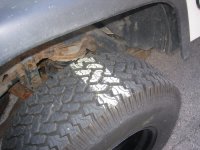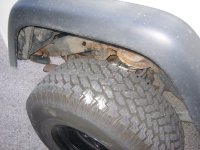webejeepin
Member
I've used the search function but didn't find an answer.... JKU leveling kit 33" MT ATZ, no after market bumpers or excessive weight...daily highway driver 120km per day. Cold I have 30 PSI all tires. Once I get to work I'm 32.5PSI Tires have 10,000km and have been rotated every 5,000 km (twice thus far) When I rotate I use a depth gauge and measure each tire cross section at three points... Outer / Middle / Inside All four tires are measuring 16.75 / 16 / 16.75 32nds of an inch To me this means the centre is wearing more then the in or outside.
Would the right thing to do is lower my cold pressure to 29 or 28PSI to "offset" the increase in pressure as the tires warm up?
Thanks
Would the right thing to do is lower my cold pressure to 29 or 28PSI to "offset" the increase in pressure as the tires warm up?
Thanks


